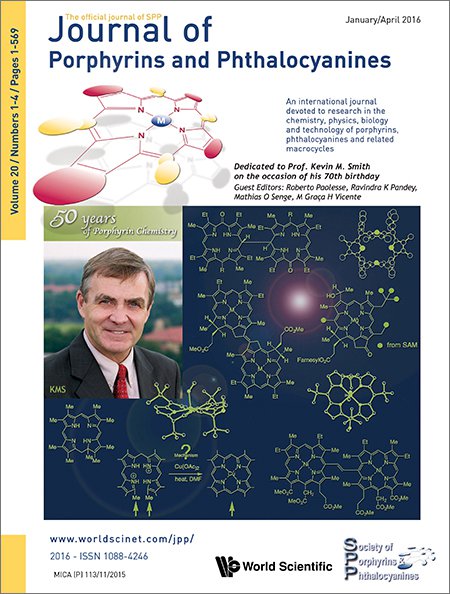Quinoline-annulated chlorins and chlorin-analogs
Abstract
The OsO4-mediated dihydroxylation of quinoline-annulated porphyrin generates a quinoline-annulated dihydroxychlorin in a regioselective fashion. Its dihydroxypyrroline moiety, located at the opposite of the annulated pyrrole, is susceptible to the same functional group interconversions we previously demonstrated for non-annulated dihydroxychlorins: oxidations to the corresponding dione, lactone, and dialkoxymorpholine derivatives. The quinoline-annulated chlorin and derivatives are all characterized by absorption spectra that are much broadened and between 130 and 220 nm red-shifted compared to their non-annulated analogs. Absorbance maxima in the NIR up to well above 800 nm were recorded. We attribute the bathochromic shift to their extended π-systems and inferred non-planarity, highlighting that quinoline-annulation is a particularly effective and simple strategy to red-shift the absorption spectra of chlorins and chlorin analogs.

Dedicated to Professor Kevin M. Smith on the occasion of his 70th birthday
Handbook of Porphyrin Science now available in 46 volumes


